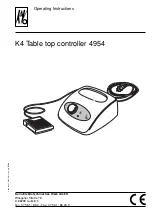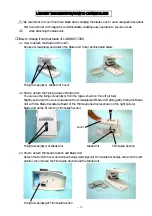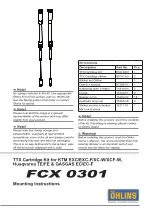
User Manual
Doc. Number: ESO-323064
Doc. Version: 2
Released on:
Page:
49 of 82
Document Classification: Public
1. Removing the telluric absorption features by dividing the wavelength calibrated
science spectrum by the one of a telluric standard star, or a suitable synthetic telluric
model spectrum.
2. Removing the intrinsic spectral features of the telluric standard imprinted in the
science spectra after performing step 1.
3. Setting the absolute flux scale by using a spectrophotometric standard.
The spectrophotometric standard and the telluric standard can be the same star. Note that
CRIRES, as spectrometers in general, is not meant to provide high absolute spectro-
photometric accuracy due to slit losses. A list of spectrophotometric standards supported
by the pipeline is provided in Table 10.
The Observatory does not take observations of telluric or spectrophotometric standard stars
as part of the calibration plan. Observers who wish to correct for telluric features or flux
calibrate their spectra therefore need to supply a standard star OB. Observing time needed
to execute telluric or spectrophotometric standard stars is charged to the observer and must
be accounted in the amount of time requested during Phase 1.
5.2.6.2 Telluric correction via Molecfit
Users are encouraged to check the suitability of the tool Molecfit to correct near-IR spectra
for telluric features. This tool allows to fit synthetic transmission spectra to the astronomical
data and to estimate molecular abundances, especially the water vapour content of the
Earth’s atmosphere.
https://www.eso.org/sci/software/pipelines/skytools/molecfit
This tool is based on the work presented in Seifahrt et al. (2010, A&A, 524, 11); this work
discusses the performance and limitations of the technique to synthesize telluric absorption
and emission line spectra.
5.2.6.3 Telluric correction via telluric standard stars
In case that users wish to observe a telluric star, then it should be observed within 2 hours
in time and with an airmass difference of less than 0.2. Usually either hot stars or solar
analogues should be used as telluric standards. The observations of the science and telluric
standard star are typically taken consecutively (i.e., as a concatenation)
Hot stars as telluric standards. Spectra of stars hotter than B4 are well fitted by a black
body, with the exception of a few lines (for example, neutral hydrogen Brackett lines). So,
by knowing its spectral type, the continuum of a star can be fitted by a Planck function with
the appropriate temperature. Some hot stars also have emission lines or are in dusty
regions and should therefore be avoided. A positive value of the V-I colour of a star can be
used as an indicator of reddening due to the presence of dust on its line-of-sight.
Late-type stars or G stars as telluric standards. Although stars cooler than A0 show
molecular features, they could be used as telluric standard stars if the region around the
hydrogen and helium lines is of interest. Late type stars exhibit only weak hydrogen and
helium lines in their spectra.
Solar analogues, for the purpose of removing telluric features, are stars with spectral type
G0V to G4V. These stars have many absorption lines in the IR, particularly in the J band.
















































